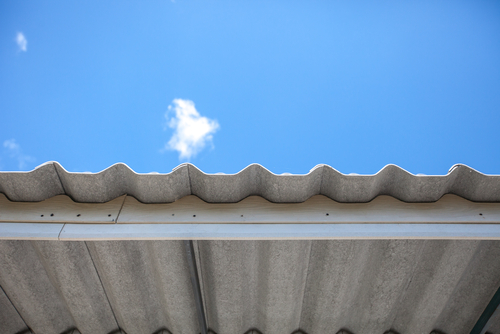In our last blog, we discussed the places that mould can hide. However, mould isn’t the only nasty thing that can sneak into houses. Asbestos was once in over 1200 common household items and materials. Depending on the age of your home, hidden asbestos may be lingering in more than a few places. However, it’s important to remember, that not all locations are equally bad. Some of these asbestos containing materials work really well and pose almost no risk.
Roofing, Ceiling Tiles, and Siding Materials
are some of the most common places you’ll find asbestos. Fortunately these three materials are very stable, and it’s really uncommon that asbestos fibers will begin to be released into the air. Because of this, we usually recommend leaving roofing, ceiling tiles, and siding alone — as long as they’re in good condition. However, if any of these products are cracked, cut, or broken, they should be replaced immediately.
Old Pipe and Duct Insulation.
If you work in a building or live in a home that was built before the 70s, then at one time the pipes and ducts were probably wrapped in a “blanket” of insulation. This insulation nearly always contained asbestos. Unlike with roofing and siding, this is a really bad place to have asbestos. It’s easy to disturb, and fibers can easily get sucked up vents and spread around. If you aren’t sure the insulation around your pipes and ducts is asbestos free, call in the expert team at Amity to have it checked out. Other types of insulation to watch out for: older insulations used around furnaces and stoves.
Wallpaper.
If you rent or own an older home, there’s a decent chance that at least one room is decorated with wall paper. If that wall paper is as old as the building, then there’s also a good chance that it contains asbestos. Like roofing, ceiling, and siding materials, in perfect condition, wallpaper isn’t going to cause you any problems. However, wallpaper is much easier to wreck. If it gets wet, begins to curl, or is otherwise damaged, it’s important to have an expert test whether it contains asbestos. Removing asbestos-containing wallpaper yourself can prove to be deadly. This is because it only takes an hour or two of exposure to asbestos fibers to develop a deadly form of lung cancer twenty to thirty years later. Before turning wallpaper removal into DIY project, make sure it’s asbestos free.
Even today, asbestos-containing materials are still on the market. Many of these materials will contain very tightly concealed asbestos fibers that cannot escape into the air. When used correctly and left in perfect condition, most of these materials won’t pose a risk to a homeowner’s health. If left to break and age, they become much more hazardous.
As always, your most important tool in staying safe is knowledge. If you aren’t sure if you have asbestos or asbestos-containing materials in your home, call the experts at Amity Environmental. We can test your home, answer your questions, and give you the advice you need.


